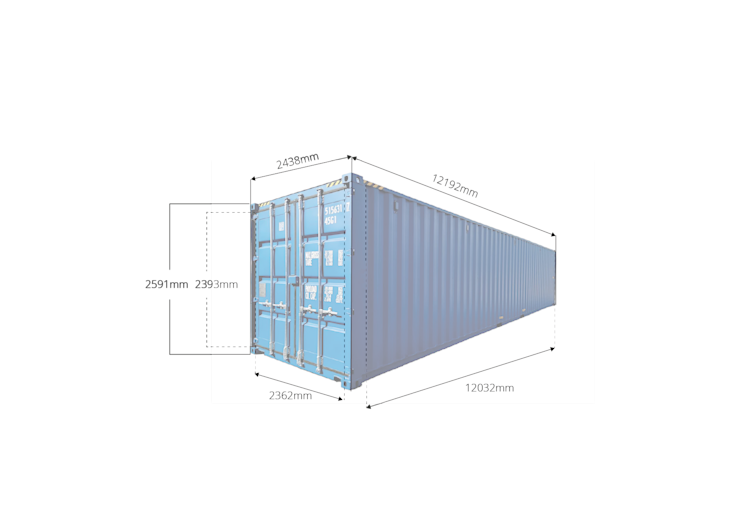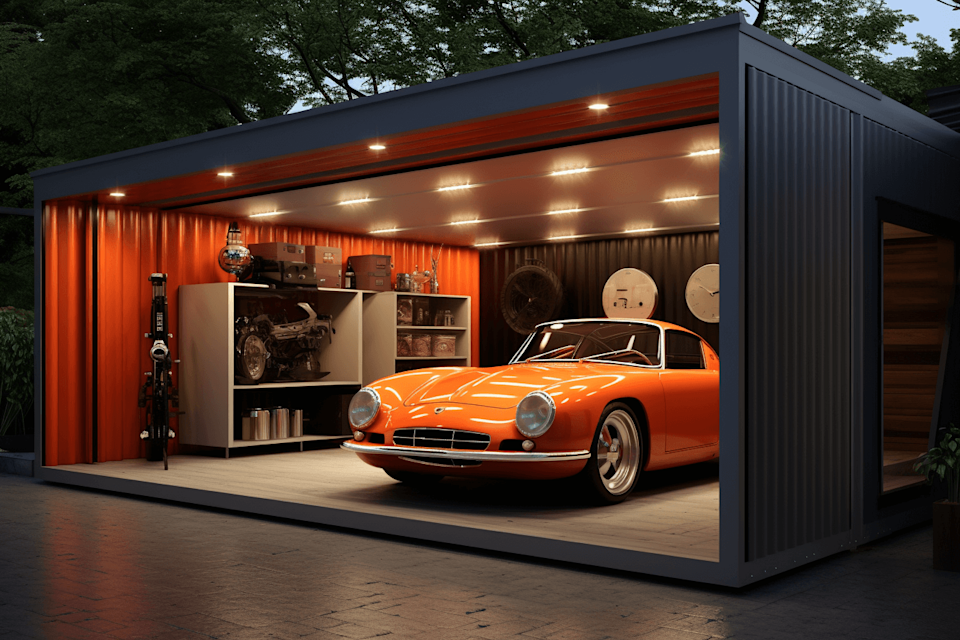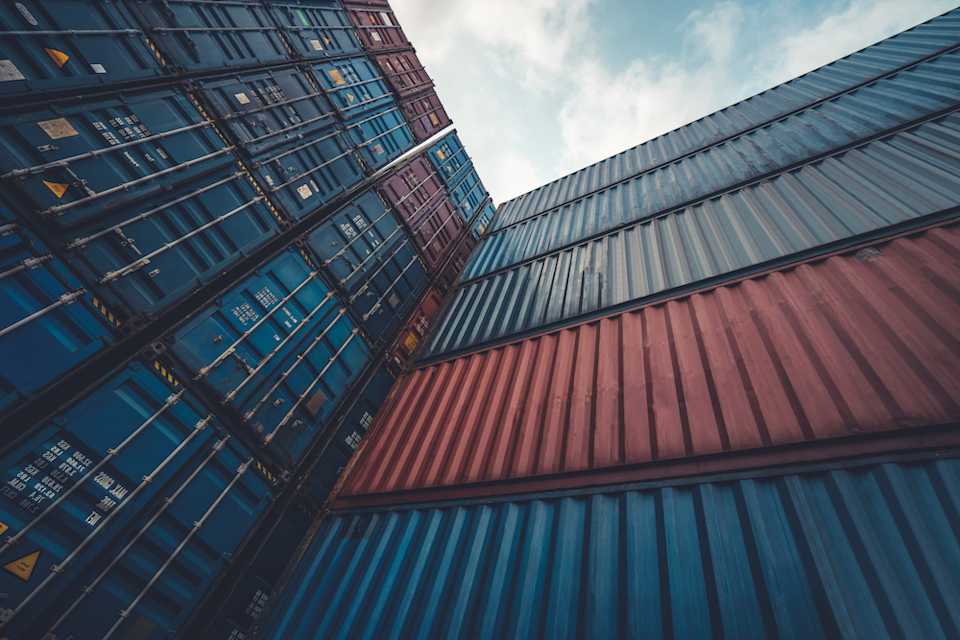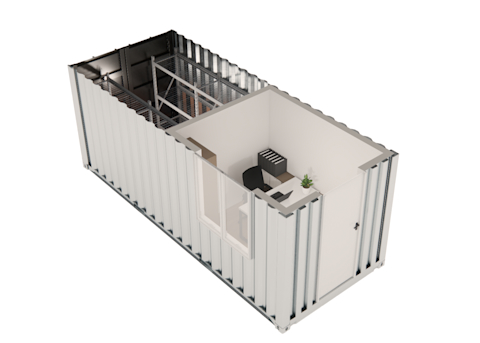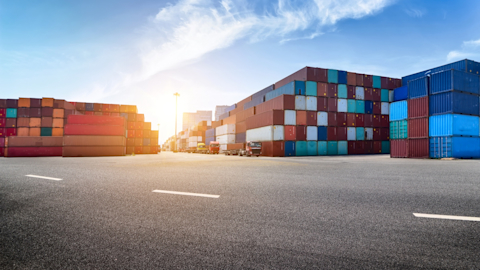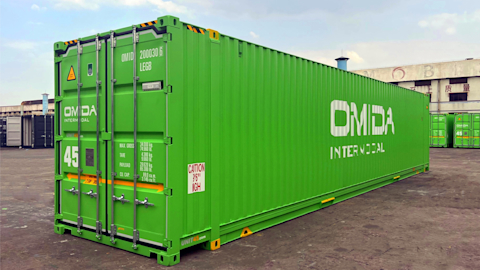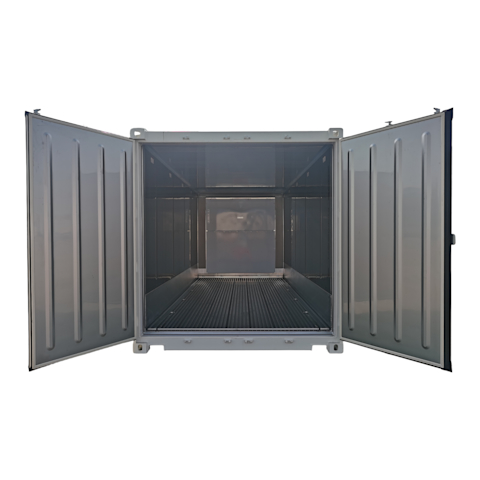Construction
The container has a metal frame, with ISO standard corner fittings for lifting by machine or crane. Walls and the roof are made of 1.6 millimeter thick steel sheet, and the floor is made of 28 millimeter thick wooden plywood. The roof is contoured to prevent water retention and ensures proper resistance to the rigors of transport. The container has doors on one of the shorter walls, swinging open, with locks compliant with the ISO standard.
Equipment
Inside the container, there are cargo securing brackets. Doors: double-winged, capable of being secured with a padlock at several points, with a rubber seal, and a door aperture size of 2.340 m in width and 2.280 m in height.
Factory-installed gravitational ventilation at each upper corner, protected externally by a plastic grille to keep out insects.
Weight of the Shipping Container – How much does a 40'DV shipping container weigh?
The allowable load for a 40'DV shipping container is about 29,050 kg, meaning that together with the cargo, the maximum weight of the container can be 32,500 kg. However, it's important to remember that the payload also depends on the technical specifications of the particular container, as well as the cargo specifications and its distribution inside the container. Exceeding the allowable payload can lead to container damage, as well as dangerous situations on the road during transport.
Standards
The 40’DV shipping container meets international standards: ISO 668, ISO 1496, and CSC (Convention for Safe Containers). All our containers are made in accordance with the highest quality standards, guaranteeing durability and reliability even under the toughest conditions. Additionally, our 40'DV shipping container has been subjected to rigorous quality tests to ensure maximum protection of your items during transport.
Application of the 40-Foot Shipping Container
The 40’DV shipping container can be used for sea, rail, and road transport, making it a very versatile solution. It can be used to transport goods such as furniture, household appliances, or construction materials.
Weight of the Shipping Container – How much does a 40’DV shipping container weigh?
The allowable load for a 40'DV shipping container is 30,480 kg, meaning that together with the cargo, the maximum weight of the container can be 34,930 kg. However, it's important to remember that the payload also depends on the specifications of the cargo and its distribution inside the container. Exceeding the allowable payload can lead to container damage, as well as dangerous situations on the road during transport.
Shipping Containers for Sale – Sale of a 40’DV container.
It's possible to view and pick up the container in person after prior arrangement. We also offer crane truck transport (HDS). Terms, schedule, and transport costs will be determined individually.
Types of Shipping Containers – How to choose the right one?
Are you interested in this product or looking for another type of container? Learn more and choose the right one for your industry and application.
Shipping containers are one of the most important ways of transporting goods around the world. There are several types of shipping containers, each adapted for the transport of a specific type of goods. Choosing the right type of shipping container is key to the safe and effective transport of cargoes. In our offer, we have various types of containers.
Types of Containers
The most popular types of containers include:
- Standard containers - these are the most commonly used shipping containers, suitable for transporting a variety of cargoes (including furniture, textiles, and industrial products). They have standard dimensions and can be used on various types of ships.
- Reefer containers - these are special refrigerated containers equipped with cooling systems, used for transporting products that require specific temperature conditions, such as meat, fruits, or vegetables.
- Tank containers - these are containers designed for transporting liquids, gases, and other chemical substances.
- Platform containers - typically used for transporting heavy and large cargoes, such as construction machinery and vehicles.
- Open-top containers - have an openable roof that facilitates the loading and unloading of large-sized goods.
- Flat rack containers - have a flat platform and side walls, allowing for the transport of large and non-standard cargoes.
- High cube containers - have a greater height than standard containers, allowing for the transport of larger volume cargoes.
The availability of various types of shipping containers enables the transport of different kinds of goods worldwide. To choose the right type of shipping container, it's necessary to consider the type of goods to be transported, as well as safety and transport requirements. It's also advisable to consult with a shipping company experienced in transporting the type of cargoes you have, as they can help in selecting the appropriate type of shipping container.
Industries that Use 40'DV Shipping Containers
40'DV (Dry Van) shipping containers
are among the most commonly used containers for transporting various goods worldwide.
Here are some examples of applications for 40-foot containers:
Textile Industry
- Transport of fabrics, clothing, and fashion accessories.
Chemical Industry
- Transport of chemical materials requiring special protection against leakage and damage.
Electronics Industry
- Transport of electronics, such as TVs, computers, and smartphones.
Automotive Industry
- Transport of auto parts, tires, batteries, and other car accessories.
Furniture Industry
- Transport of furniture, interior equipment, and building materials.
Paper Industry
- Transport of paper, cartons, and paper products.
Construction Industry
- Transport of building materials, such as bricks, panels, pipes, wood.
Pharmaceutical Industry
- Transport of medicines and medical products not requiring temperature control.




